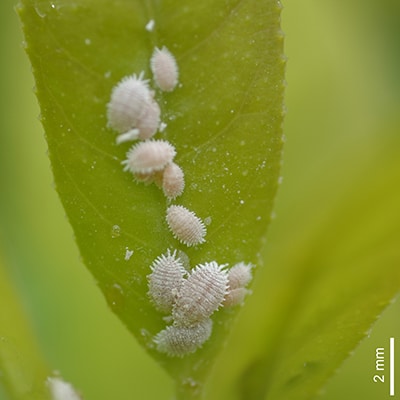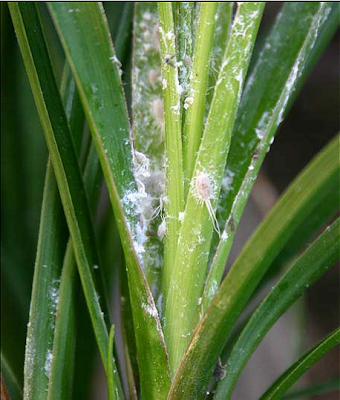Mealybugs and Scales are probably the most common insect pest after scales on orchids. Mealybugs can cause loss of leaves, buds and flowers through their feeding and also weaken the plants. In addition, mealybugs create large amounts of honeydew which make plant parts sticky, attracts ants, and provides a substrate for sooty mold.
SYMPTOMS




At first glance, it looks as though the plant has some sort of cottony white fluffy mass on its leaves. Closer examination reveals a wingless insect that is feeding on the plant's tissue. They can seemingly appear out of nowhere and quickly spread across an entire plant or set of plants. They like to hide in crevices and under leaves so by the time we see them on top of the leaves of a plant it is likely they are already fairly well established. Taking a look under the leaves usually reveals powdery clumps of them as well as a few individuals.
TREATMENT
Treatment of all pest attack starts with the following:
- Isolate the plant from other plants in your collection.
- Chemical treatment with following on all plants in your collection.
- For a small infestation, you can rub the scale with isopropyl alcohol on cotton to remove them.
When symptoms are detected, spraying with a pesticide such as the following are effective :
- Chemical name: Malathion
- Dosage: 1ml per litre of water
Keep the plants drier and isolate the plants to keep the infestation from spreading or appearing again. Isolate the plants and observe the plants for 1-2 weeks. And apply another round of control spray with any of the above chemicals. Spray the plants early morning and keep the plants dry after the spraying. Don't water the plants same day spray treatment is done.
PREVENTION
- Remove old leaf and flower sheaths to eliminate scale hiding places.
- Do regular inspection for pests.
- Immediate treatment if any pest is observed.

